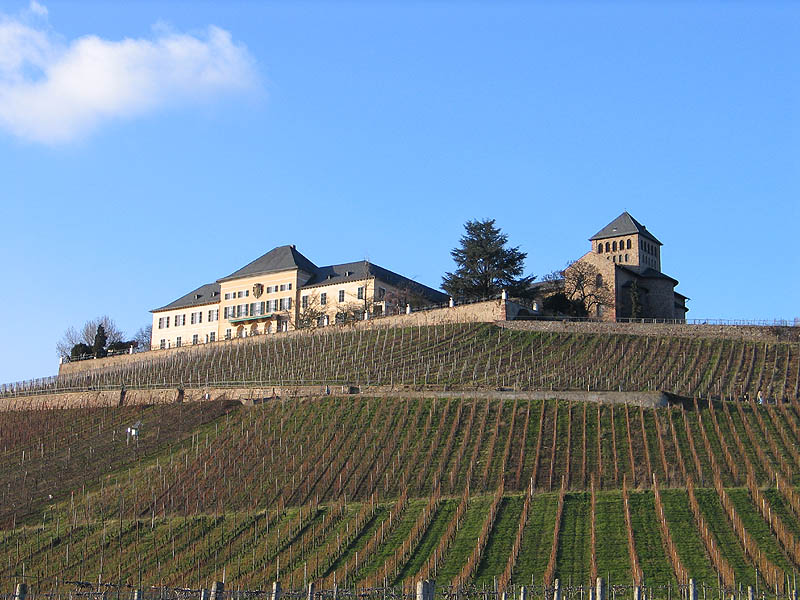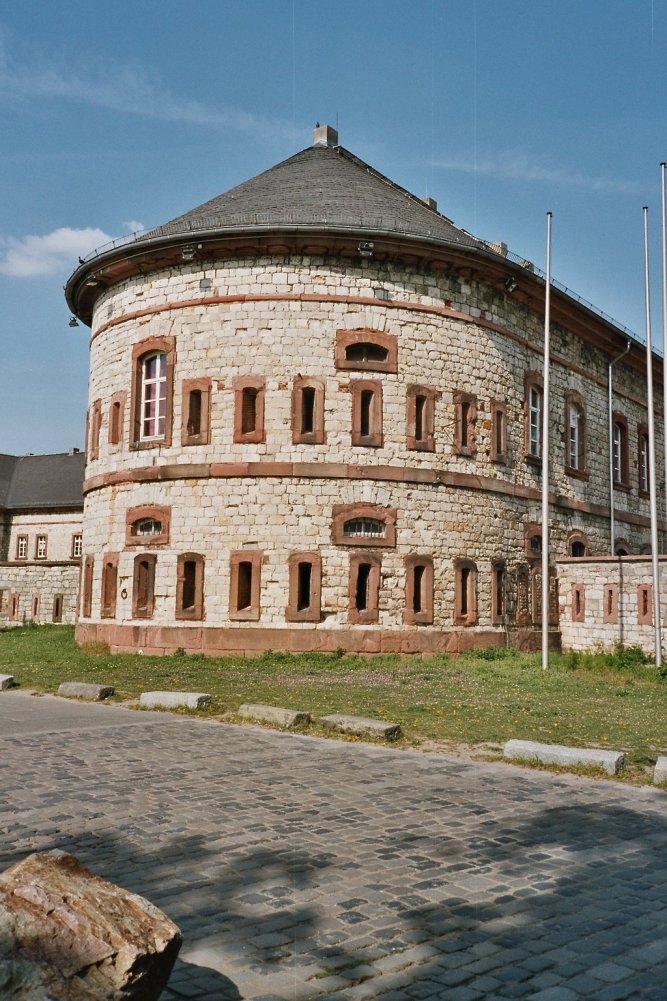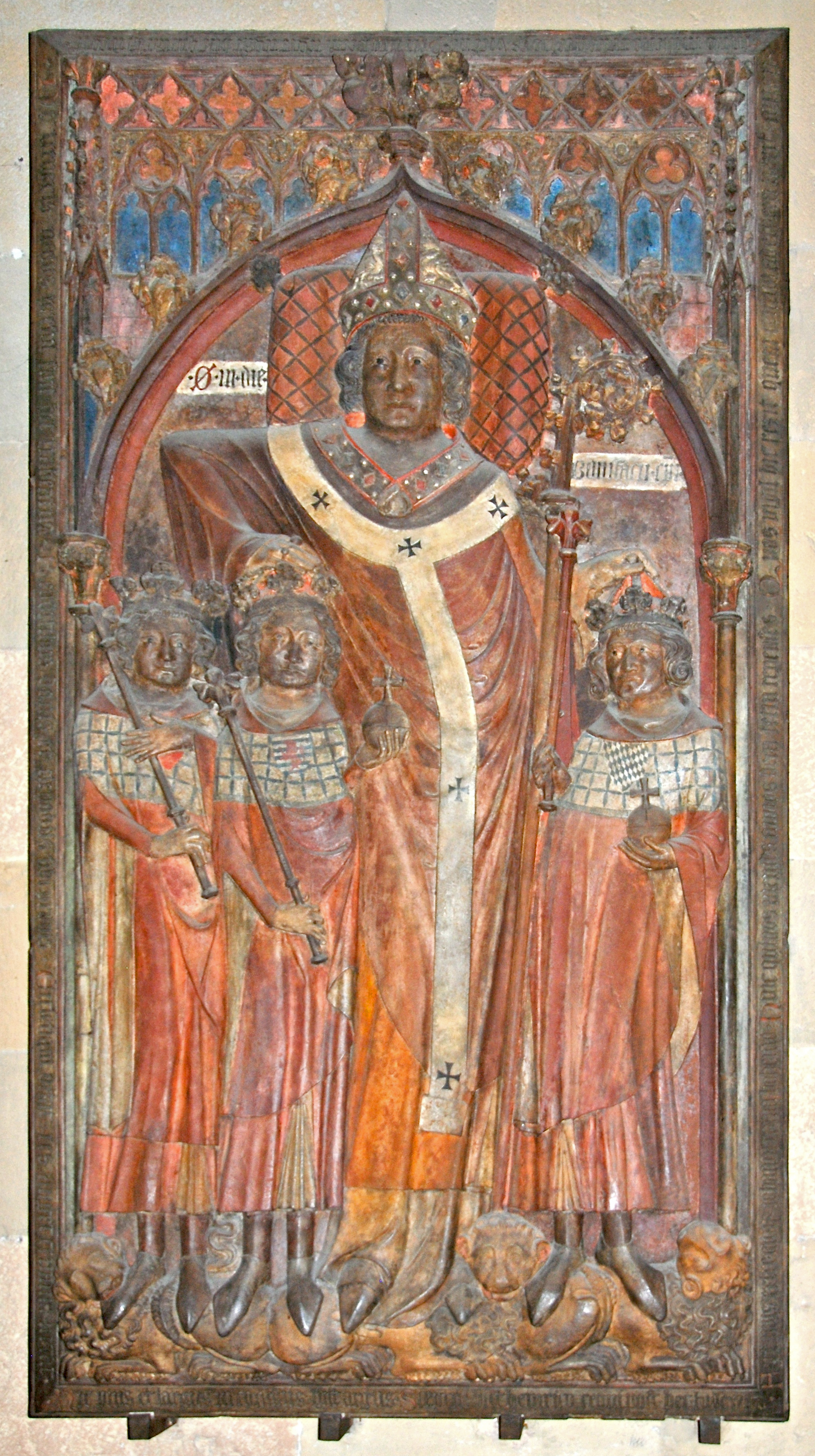|
Johann Philipp Von Schönborn
Johann Philipp von Schönborn (6 August 1605 – 12 February 1673) was the Archbishop-Elector of Mainz (1647–1673), the Bishop of Würzburg (1642–1673), and the Bishop of Worms (1663–1673). Life Johann Philipp was born in his family's manor house at Laubuseschbach (present-day Hesse) to Georg von Schönborn, a minor nobleman at the employ of the Lutheran counts of Wied. The Schönborn family had knightly rank and was first mentioned in 1275. However, by the time Johann Philipp grew up, most branches of the family had extinguished, and in fact, he and his brother were the last sprouts of the family. Laubuseschbach, Schönbornscher Hof.JPG, Birth house in Laubuseschbach In 1621, after it had been ascertained that he possessed the minimum quarters of nobility required, he was admitted as a minor canon (domizellar) by the cathedral chapter of Wurzburg Cathedral, and in 1625 by the cathedral chapter of Mainz Cathedral as well. In 1626, he received consecra ... [...More Info...] [...Related Items...] OR: [Wikipedia] [Google] [Baidu] |
Catholic Church
The Catholic Church, also known as the Roman Catholic Church, is the largest Christian church, with 1.3 billion baptized Catholics worldwide . It is among the world's oldest and largest international institutions, and has played a prominent role in the history and development of Western civilization.O'Collins, p. v (preface). The church consists of 24 ''sui iuris'' churches, including the Latin Church and 23 Eastern Catholic Churches, which comprise almost 3,500 dioceses and eparchies located around the world. The pope, who is the bishop of Rome, is the chief pastor of the church. The bishopric of Rome, known as the Holy See, is the central governing authority of the church. The administrative body of the Holy See, the Roman Curia, has its principal offices in Vatican City, a small enclave of the Italian city of Rome, of which the pope is head of state. The core beliefs of Catholicism are found in the Nicene Creed. The Catholic Church teaches that it is the on ... [...More Info...] [...Related Items...] OR: [Wikipedia] [Google] [Baidu] |
Franconia
Franconia (german: Franken, ; Franconian dialect: ''Franggn'' ; bar, Frankn) is a region of Germany, characterised by its culture and Franconian dialect (German: ''Fränkisch''). The three administrative regions of Lower, Middle and Upper Franconia (largest cities, respectively: Würzburg, Nuremberg and Bamberg) in the State of Bavaria are part of the cultural region of Franconia, as are the adjacent Franconian-speaking South Thuringia, south of the Rennsteig ridge (largest city: Suhl), Heilbronn-Franconia (largest city: Schwäbisch Hall) in the state of Baden-Württemberg, and small parts of the state of Hesse. Those parts of the Vogtland lying in the state of Saxony (largest city: Plauen) are sometimes regarded as Franconian as well, because the Vogtlandian dialects are mostly East Franconian. The inhabitants of Saxon Vogtland, however, mostly do not consider themselves as Franconian. On the other hand, the inhabitants of the Hessian-speaking parts of Lower Franconia ... [...More Info...] [...Related Items...] OR: [Wikipedia] [Google] [Baidu] |
Heusenstamm
Heusenstamm () is a town of over 18,000 people in the Offenbach district in the ''Regierungsbezirk'' of Darmstadt in Hesse, Germany. Geography Location Heusenstamm is one of 13 towns and communities in the Offenbach district. The town lies in the Frankfurt Rhine Main Region south of Frankfurt am Main and Offenbach am Main at an average elevation of 121 m above sea level. The town lies on the river Bieber. The lowest natural point is the Bieber's riverbed, and the highest is the ''Hoher Berg'' ("High Mountain"). Darmstadt, the seat of the ''Regierungsbezirk'', is located to the southwest. Heusenstamm lies in the southern part of Hesse, not far from the ''Mittelgebirge'' of the Odenwald and Spessart. Neighbouring communities Heusenstamm borders in the north on the district-free city of Offenbach am Main, in the northeast on the town of Obertshausen, in the southeast on the town of Rodgau, in the south on the town of Dietzenbach, and in the west on the town of Dreieic ... [...More Info...] [...Related Items...] OR: [Wikipedia] [Google] [Baidu] |
Geisenheim
Geisenheim is a town in the Rheingau-Taunus-Kreis in the ''Regierungsbezirk'' of Darmstadt in Hessen, Germany, and is known as ''Weinstadt'' (“Wine Town”), ''Schulstadt'' (“School Town”), ''Domstadt'' (“Cathedral Town”) and ''Lindenstadt'' (“Linden Tree Town”). Geography Location Geisenheim lies on the Rhine’s right bank between Wiesbaden and Rüdesheim, 3 km away to the west. Mainz lies 21 km away to the east. Neighbouring communities Geisenheim borders in the north on the town of Lorch, in the east on the town of Oestrich-Winkel, in the south on the towns of Ingelheim and Bingen (both in Mainz-Bingen in Rhineland-Palatinate) and in the west on the town of Rüdesheim. Constituent communities The town of Geisenheim is divided into four '' Stadtteile'': the main town (also called Geisenheim), Johannisberg (Grund, Berg, Schloßheide), Marienthal and Stephanshausen. Johannisberg might well be the best known of Geisenheim’s constituent com ... [...More Info...] [...Related Items...] OR: [Wikipedia] [Google] [Baidu] |
Vogt
During the Middle Ages, an (sometimes given as modern English: advocate; German: ; French: ) was an office-holder who was legally delegated to perform some of the secular responsibilities of a major feudal lord, or for an institution such as an abbey. Many such positions developed, especially in the Holy Roman Empire. Typically, these evolved to include responsibility for aspects of the daily management of agricultural lands, villages and cities. In some regions, advocates were governors of large provinces, sometimes distinguished by terms such as (in German). While the term was eventually used to refer to many types of governorship and advocacy, one of the earliest and most important types of was the church advocate (). These were originally lay lords, who not only helped defend religious institutions in the secular world, but were also responsible for exercising lordly responsibilities within the church's lands, such as the handling of legal cases which might require the u ... [...More Info...] [...Related Items...] OR: [Wikipedia] [Google] [Baidu] |
Mainz Citadel
The Mainzer Zitadelle (Citadel of Mainz) is situated at the fringe of , near Mainz Römisches Theater station. The fortress was constructed in 1660 and was an important part of the Fortress Mainz. History The Jakobsberg hill, where the citadel was constructed, had been occupied by a Benedictine abbey during the Middle Ages (since 1050). Halfway up the hill, the amphitheater of the Roman settlement of Mogontiacum, must also have been visible at that time. The Jakobsberg hill, however, had not been integrated in the ring of the defensive city walls of the town and this flank of the city was therefore only slightly protected. This position immediately at the gates of the town opened a strategic gap, as an aggressor could use the hill for a raid into Mainz or for a cannonade. The construction of the "Schweickhardtsburg" fortress under the supervision of cathedral vicar Adolph von Waldenburg during the years 1620-29 provisionally filled this gap and integrated the hill into the system ... [...More Info...] [...Related Items...] OR: [Wikipedia] [Google] [Baidu] |
Fortress Of Mainz
The Fortress of Mainz was a fortressed garrison town between 1620 and 1918. At the end of the Napoleonic Wars, under the term of the 1815 Peace of Paris, the control of Mainz passed to the German Confederation and became part of a chain of strategic fortresses which protected the Confederation. With the dissolution of the Confederation and the Austro-Prussian War, control of the fortress first passed to Prussia, and, after the 1871 Unification of Germany, to the German Empire. 1839 In 1839 an article on Mainz in ''The Penny Cyclopædia'' stated that Mainz was one of the strongest fortresses in Europe, and a chief bulwark of Germany against France. At the Congress of Vienna, Mainz was assigned to the Louis, Grand-Duke of Hesse-Darmstadt, but it was decided that, as a fortress, it should belong to the German Confederation, with a garrison of Austrian, Prussian, and Hessian troops. This garrison in time of peace consisted of 6,000 men. The military governor, who retained his post ... [...More Info...] [...Related Items...] OR: [Wikipedia] [Google] [Baidu] |
Mainz
Mainz () is the capital and largest city of Rhineland-Palatinate, Germany. Mainz is on the left bank of the Rhine, opposite to the place that the Main (river), Main joins the Rhine. Downstream of the confluence, the Rhine flows to the north-west, with Mainz on the left bank, and Wiesbaden, the capital of the neighbouring state Hesse, on the right bank. Mainz is an independent city with a population of 218,578 (as of 2019) and forms part of the Frankfurt Rhine-Main, Frankfurt Rhine-Main Metropolitan Region. Mainz was founded by the Roman Empire, Romans in the 1st century BC as a military fortress on the northernmost frontier of the empire and provincial capital of Germania Superior. Mainz became an important city in the 8th century AD as part of the Holy Roman Empire, capital of the Electorate of Mainz and seat of the Elector of Mainz, Archbishop-Elector of Mainz, the Primate (bishop), Primate of Germany. Mainz is famous as the birthplace of Johannes Gutenberg, the inventor of ... [...More Info...] [...Related Items...] OR: [Wikipedia] [Google] [Baidu] |
Bishopric Of Worms
The Prince-Bishopric of Worms, was an ecclesiastical principality of the Holy Roman Empire. Located on both banks of the Rhine around Worms just north of the union of that river with the Neckar, it was largely surrounded by the Electorate of the Palatinate. Worms had been the seat of a bishop from Roman times. From the High Middle Ages on, the prince-bishops' secular jurisdiction no longer included the city of Worms, which was an Imperial Free City (the Free Imperial City of Worms) and which became officially Protestant during the Reformation. The prince-bishops however retained jurisdiction over the Cathedral of Worms inside the city. In 1795 Worms itself, as well as the entire territory of the prince-bishopric on the left bank of the Rhine, was occupied and annexed by France. In the wake of the territorial reorganizations that came with the German mediatization of 1802, the remaining territory of the bishopric, along with that of nearly all the other ecclesiastical principaliti ... [...More Info...] [...Related Items...] OR: [Wikipedia] [Google] [Baidu] |
Holy Roman Empire
The Holy Roman Empire was a Polity, political entity in Western Europe, Western, Central Europe, Central, and Southern Europe that developed during the Early Middle Ages and continued until its Dissolution of the Holy Roman Empire, dissolution in 1806 during the Napoleonic Wars. From the accession of Otto I in 962 until the twelfth century, the Empire was the most powerful monarchy in Europe. Andrew Holt characterizes it as "perhaps the most powerful European state of the Middle Ages". The functioning of government depended on the harmonic cooperation (dubbed ''consensual rulership'' by Bernd Schneidmüller) between monarch and vassals but this harmony was disturbed during the Salian Dynasty, Salian period. The empire reached the apex of territorial expansion and power under the House of Hohenstaufen in the mid-thirteenth century, but overextending led to partial collapse. On 25 December 800, Pope Leo III crowned the List of Frankish kings, Frankish king Charlemagne as Carolingi ... [...More Info...] [...Related Items...] OR: [Wikipedia] [Google] [Baidu] |
Archchancellor
An archchancellor ( la, archicancellarius, german: Erzkanzler) or chief chancellor was a title given to the highest dignitary of the Holy Roman Empire, and also used occasionally during the Middle Ages to denote an official who supervised the work of chancellors or notaries. The Carolingian successors of Pepin the Short appointed chancellors over the whole Frankish realm in the ninth century. Hincmar refers to this official as a ''summus cancellarius'' in ''De ordine palatii et regni'' and an 864 charter of King Lothair I refers to Agilmar, Archbishop of Vienne, as archchancellor, a word which also begins appearing in chronicles about that time. The last Carolingian archchancellor in West Francia was Archbishop Adalberon of Reims (969-988), with the accession of Hugh Capet the office was replaced by a ''Chancelier de France''. At the court of Otto I, then King of Germany, the title seems to have been an appanage of the Archbishop of Mainz. After Otto had finally deposed King ... [...More Info...] [...Related Items...] OR: [Wikipedia] [Google] [Baidu] |

.jpg)




